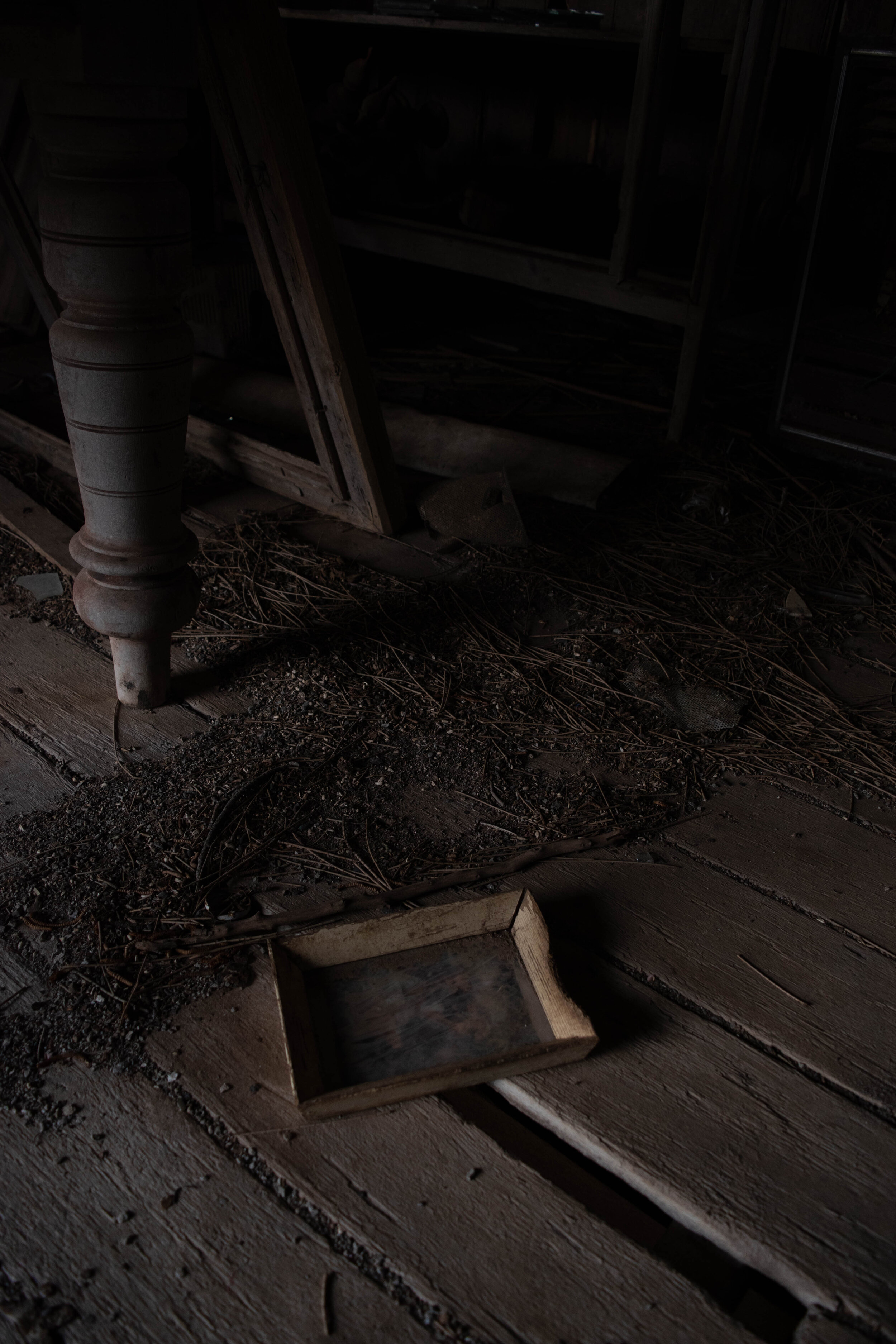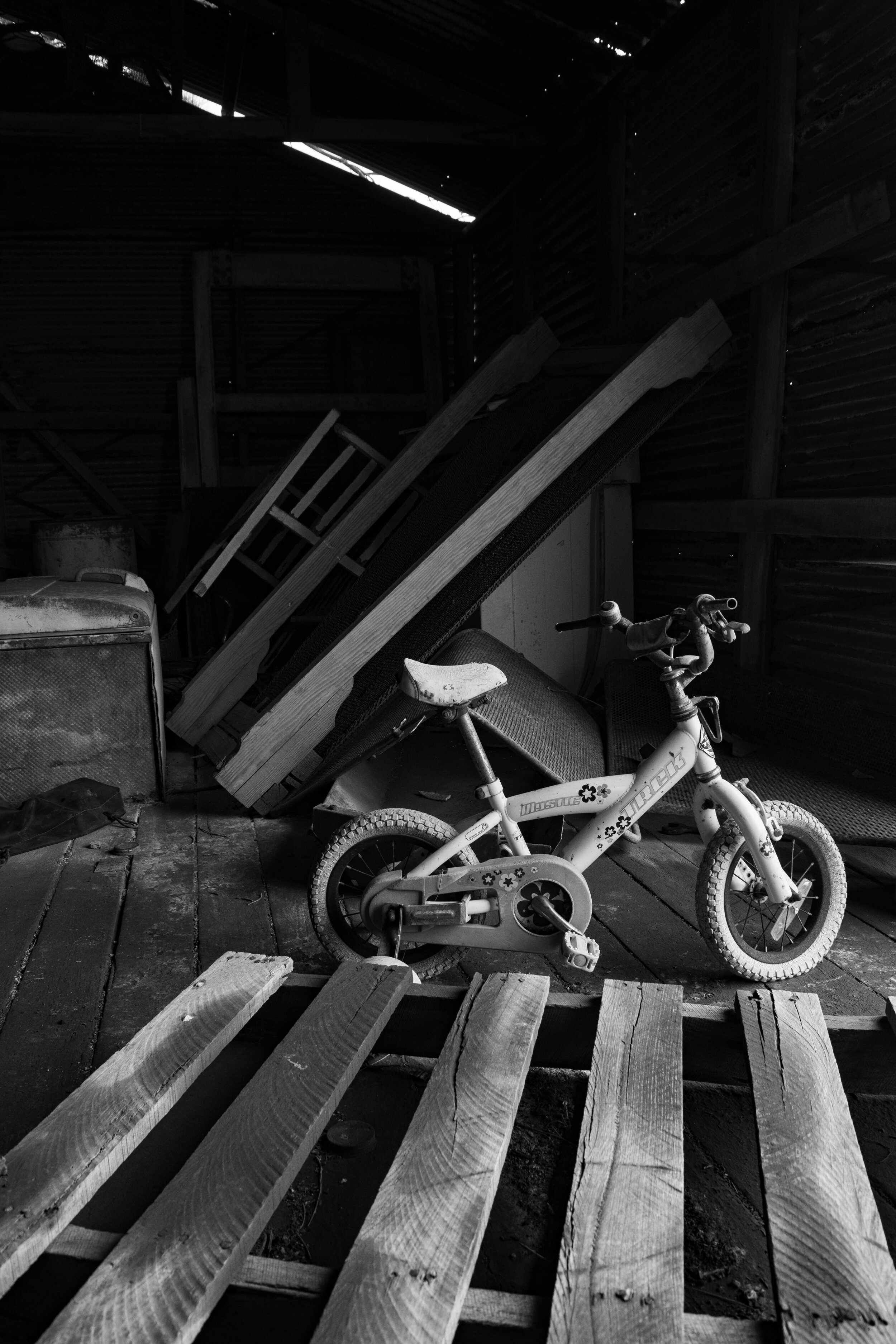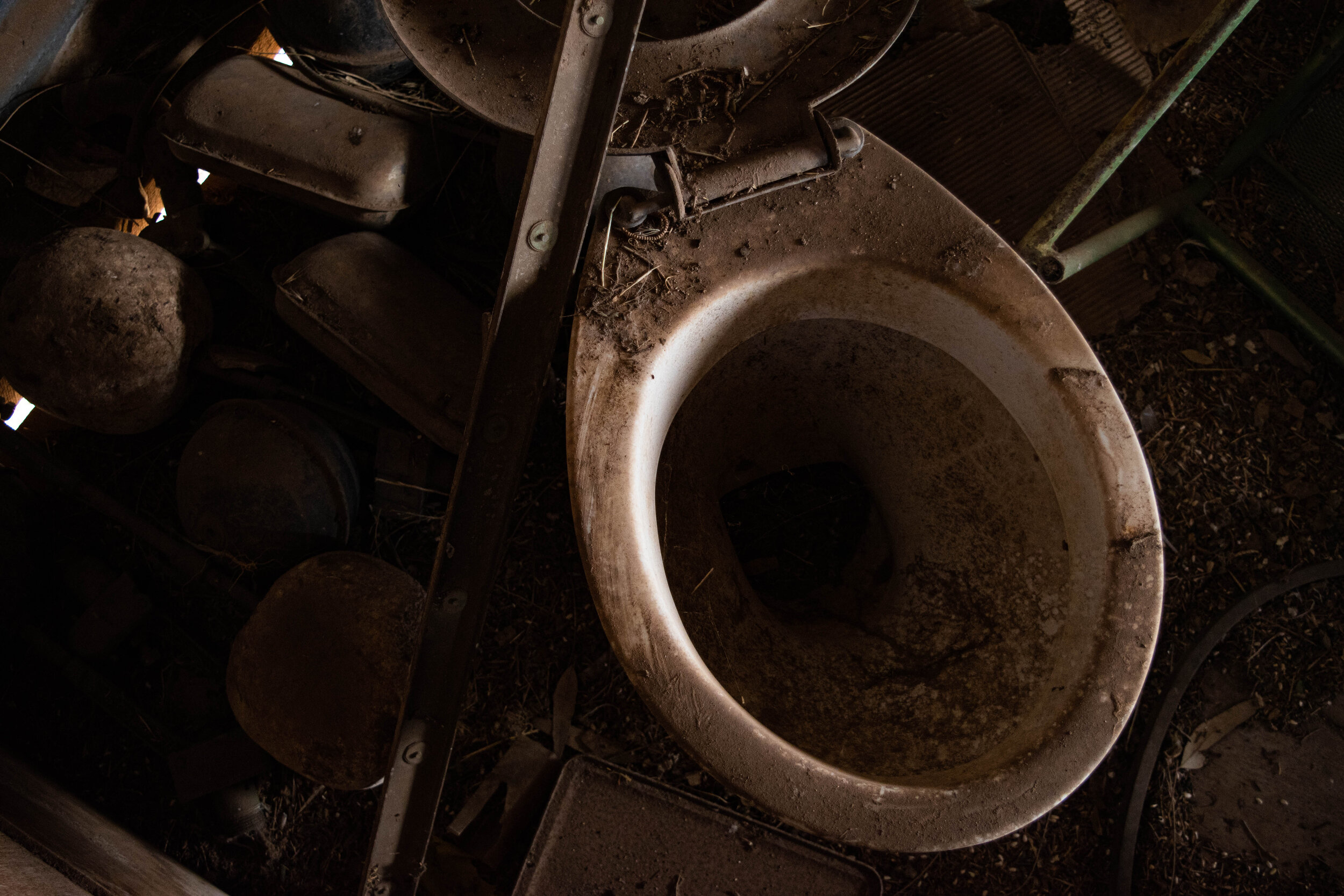Abandoned - Part 1
Abandoned – to leave completely and finally; forsake utterly; desert
One thing that has intrigued me since arriving in the US to live, is the vast amount of abandoned buildings I’ve seen. I first noticed them in downtown Memphis, but then I’ve also observed them throughout parts of the US when we’ve travelled. In some areas, they dominate the landscape and emanate the feel of a modern day ghost town. It’s compelled me to ponder many questions – why are there so many in one of the richest nations in the world, are some areas harder hit than others, what is the story behind their abandonment, and who are the people behind the stories? It’s also raised other questions in my mind – what else becomes abandoned, and why – not just buildings, but whole towns, cultures, ideologies, and most importantly, ourselves? I’ll be delving into these questions in this 5 part series, and in this first photo story, I explore where the intrigue came for me in the first place, the generational farm I grew up on, and the Irish and Indigenous peoples forced to abandon their lands.
Founders and owners of the farm ‘Wickland Park’, @ Koolywurtie (near Minlaton), Yorke Peninsula, South Australia.
I guess I first became interested in ‘the abandoned’ growing up on a farm on Yorke Peninsula, South Australia. My ancestors on Dad’s side, John and Anne Mahar, emigrated from Ireland (via Plymouth in the UK) in November 1851 following the decimation of Ireland after the Potato Famine.
See here for further information on the Mahar’s of Ireland and where they immigrated to:
https://www.houseofnames.com/mahar-family-crest
They came as part of the ‘Assisted Package Scheme’ that was devised to bring much needed labour to the young country of Australia. They arrived in Adelaide, South Australia in February 1852 and proceeded to lease land to farm in Yankalilla, south of Adelaide. For 23 years they worked and saved, which enabled them to purchase land at Koolywurtie (near Minlaton, Yorke Peninsula), move there in 1875, and begin the next stage of their life. They abandoned their families, their home towns, their country, and their culture, to move to a new country with the hope of better prospects for themselves.
See here for the ship passenger details:
http://www.theshipslist.com/ships/australia/adelaide1852.shtml
They weren’t the only ones. Approximately 1 million people died in the famine between 1845 and 1851, and it’s estimated another 1 million people emigrated from Ireland to escape the poverty.
In Dublin, ‘The Famine Memorial Sculpture’, by Rowan Gillespie. Photo from Pinterest, photographer unknown.
Growing up, I don’t recall ever really learning about the reasons behind the famine, just that the potato crop had failed for years. I knew that life was tough in Ireland, and Australia presented a great opportunity for families to make a fresh start. Following is some background information from History.com to give a little more insight:
https://www.history.com/topics/immigration/irish-potato-famine
Ireland in the 1800s
With the ratification of the Acts of Union in 1801, Ireland was effectively governed as a colony of Great Britain until its war of independence in the early 20th century. Together, the combined nations were known as the United Kingdom of Great Britain and Ireland.
As such, the British government appointed Ireland’s executive heads of state, known respectively as the Lord Lieutenant and the Chief Secretary of Ireland, although residents of the Emerald Isle could elect representation to the Parliament in London.
In all, Ireland sent 105 representatives to the House of Commons—the lower house of Parliament—and 28 “peers” (titled landowners) to the House of Lords, or the upper house.
Still, it’s important to note that the bulk of these elected representatives were landowners of British origin and/or their sons. In addition, any Irish who practiced Catholicism—the majority of Ireland’s native population—were initially prohibited from owning or leasing land, voting or holding elected office under the so-called Penal Laws.
Although the Penal Laws were largely repealed by 1829, their impact on Ireland’s society and governance was still being felt at the time of the Potato Famine’s onset. English and Anglo-Irish families owned most of the land, and most Irish Catholics were relegated to work as tenant farmers forced to pay rent to the landowners.
Ironically, less than 100 years before the Famine’s onset, the potato was introduced to Ireland by the landed gentry. However, despite the fact only one variety of the potato was grown in the country (the so-called “Irish Lumper”), it soon became a staple food of the poor, particularly during the cold winter months.
Legacy of the Potato Famine
The exact role of the British government in the Potato Famine and its aftermath—whether it ignored the plight of Ireland’s poor out of malice, or if their collective inaction and inadequate response could be attributed to incompetence—is still being debated.
However, the significance of the Potato Famine (or, in the Irish language, An Gorta Mor) in Irish history, and its contribution to the Irish diaspora of the 19th and 20th centuries, is beyond doubt.
Tony Blair, during his time as British Prime Minister, issued a statement in 1997 offering a formal apology to Ireland for the U.K. government’s handling of the crisis at the time.
Following is a stirring short film (5 mins) about emigration from Ireland due to the Potato Famine, set to The Pogues song ‘Thousands are Sailing’.
I also like The Pogues version of ‘Bound for South Australia’; a sea shanty - a type of work song that was once commonly sung to accompany labour on board large merchant sailing ships.
We lived pretty happy, sheltered lives on our farm as young kids. We (or at least I) wasn’t overly interested in learning the detailed history of our ancestors (although this changed as a teenager), we were more concerned with exploring all the old, interesting stuff on the farm; everything from the ‘olden days’, a term I’ve noticed my own kids using of late. Everything just seemed to have happened SO long ago… but of course, time is just relevant to your age, and the older I get, the more history seems to shorten, and I find it incredible that it was only 169 years ago that John and Anne Mahar made that trip out from Ireland.
Many generations of kids have enjoyed exploring the farm, including my sister Natasha (above left), brother Edward and myself, and my four kids and three nephews, as seen in the photo below in the old shearing shed.
And out exploring the sheds and the paddocks
Whilst my ancestors were not refugees in the official sense, they weren’t fleeing for their safety; they still had to make a potential life or death decision to abandon their homeland. It’s only as I’ve grown older and more reflective of the past that I appreciate the enormity of what they did, but also the enormity of what modern day refugees go through today. Whilst most refugees (or assisted passengers) of the 1850’s era travelled long distances (3 months by ship to Australia) to a country that needed and wanted immigration, today’s refugees attempt to escape violence, poverty and persecution to countries that may not need them, and often don’t want them. The world population was around 1.2 billion in 1851. In 2020 it’s around 7.78 billion. So much has changed in those 169 years. It’s complex, and not something I’m qualified to really write about, but it absolutely reinforces my knowledge that I grew up in a very privileged position, a complete understanding that perhaps only comes to you with age. I’m also finding that living in another culture gives you a fresh perspective on both your own past, as well as the history of the new culture you’ve moved to.
I’ve heard a new term since I moved to the US – ‘white flight’; and the expression ‘white privilege’ takes on an even greater meaning living here. I’ll go into these topics in more detail later in this series, but it would be incomplete not to mention the Indigenous community of Yorke Peninsula. The Narangga people have always lived on Yorke Peninsula, but they were displaced from the land by the European settlers, and they were forced to abandon the way of life that they knew.
The following information is from the South Australian State Library:
Before the coming of the European pastoralists, the Yorke Peninsula was the home of the Narungga people, who occupied the land from near Port Wakefield in the east, over to Port Broughton in the west, and all the way down to the southern tip of the Peninsula. The Narungga consisted of four clans, Kurnara (north), Windera (east), Wari, (west) and Dilpa (south).
It is believed that the Narungga maintained large settlements along the coast throughout much of the year. These coastal camps would have provided a regular supply of food and fresh water, as well as a gathering place for social and religious ceremony. There is also evidence of smaller camps scattered throughout the Peninsula.
Archaeological evidence shows that the Narungga had campgrounds at the areas now known as Moonta Bay, Cape Elizabeth, Chinamen's Well, Point Pearce, Black Point, Point Yorke, Tiddy Widdy and Point Morowie among others. Tools fashioned from stone, bone and shells are found at these sites.
The first lease was taken out on Yorke Peninsula in 1846, and from that time there was much conflict between pastoralists and the Aboriginal population - over land, stock, and the most precious commodity, fresh water.
Cut off from many of their traditional methods of gathering food and water some Narungga found work with pastoralists, labouring or minding sheep. Others were supplied with water, blankets, flour or other provisions by stations or Government-run depots.
In the years following colonisation, the remaining Narungga people lost much of the use of their language and cultural heritage. Once the Point Pearce Mission was opened in 1868, residents were discouraged from speaking their language and practicing their beliefs. Some Narungga resisted the move to the mission and continued to live independently, off the land, or by gaining work outside of the Mission. These groups continued to speak their own language and practice their culture - but were reluctant to pass these on to Mission residents.
The cultural identity of the Narungga was also challenged when Aboriginal people from other language groups were moved to Point Pearce - most significantly after the closure of Poonindie Mission in 1894. But the residents of the Point Pearce Mission maintained their community identity and fought long and hard for their rights to land in Yorke Peninsula. This entitlement was acknowledged in 1972, when ownership of 5,777 hectares was transferred to the Point Pearce Community Council under the Aboriginal Lands Trust Act.
For further information see: https://yorke.sa.gov.au/discover/local-history-and-heritage/indigenous-culture/the-nharangga/
I also discovered a very detailed thesis written by Syke Krichauff in 2008, titled ‘The Narungga and Europeans: Cross-Cultural Relations on Yorke Peninsula in the Nineteenth Century’. Following in an excerpt:
Narungga reactions to colonisation were diverse; people had different experiences with Europeans, depending on their gender, the location and nature of the land to which they were affiliated, their personalities, and the personalities, experiences, and motives of the Europeans with whom they came into contact. This thesis has explored the variety of Narungga responses to European invasion and has demonstrated the complexity of nineteenth century cross-cultural relations. Those people who have been forgotten by the history books and who are unknown to current day Narungga have been placed at the centre of the story. Perhaps by re-imagining the past in this way, and understanding at least some of the choices made, we can better understand the situation of Aboriginal people in the present. The Narungga coped with the take over of their land with dignity, tolerance and humanity, they were neither helpless victims nor irrational aggressors. Throughout the nineteenth century, as in the present, we can see the fundamental contradiction of British settlement where the Colonial Office’s rhetoric of concern and justice for the Aboriginal people was irreconcilable with the practice of taking over Aboriginal land and putting the drive for economic profit ahead of human lives.
For further information see: https://digital.library.adelaide.edu.au/dspace/bitstream/2440/50133/2/02whole.pdf
In the spirit of National Reconciliation Week in Australia, I am taking this opportunity to acknowledge the Yorke Peninsula traditional owners, the Narunnga people, and I recognize their continuing connection to land, water and culture. I pay my respect to their Elders past, present and emerging.
If you wish to learn more, a very informative website sharing Aboriginal and Torres Strait Islander cultures, histories and lived experiences can be found here https://www.commonground.org.au .
I was quite naive to this history growing up in the 1970’s. I just knew that our school house teams were named after the four Aboriginal tribes from the Peninsula, and that most Aboriginals lived at the Point Pearce Mission. Thankfully there seems to be a lot more research and education now, so children are more aware of this important Australian history than what we were.
In 2020, and as a white, middle-aged, 5th generation Australian that has benefited from living off this land, I’m not qualified to speak of the hardships both my ancestors and the Indigenous peoples of Yorke Pensinula suffered when they had to abandon the lives that they knew. I can only talk about the experiences I had growing up on the farm. So in that light, I wish to share with you some ‘abandoned’ images I’ve taken.
Note, I explicitly sought out abandoned objects for a specific project. My Dad is proud of keeping things in order, so these images do not reflect the general state of the farm (for you Dad x).
This is ‘The Barn’, the oldest farm structure on the property, built around the 1920’s. Exploring it is a bit like fossicking for gold. I once found a beautiful old wooden picture frame that I sanded back, stained and filled with some farm photos I took about 28 years ago. What’s left is mostly now junk, but it was all used on the farm at one point, and looking through it is like a visual trip through the history pages. It’s soon to be torn down, so I’m glad I’ve been able to capture some of its history.
I remember fondly cubbie houses my siblings and I used to make with the wood from under this barn. One of my favourites was the rudimentary treehouse we built near our house. It was such a feeling of exhilaration hiding up there where no-one could find you.
And some of the treasures that I’ve found in there:
We had a lot of fun learning to drive from an early age. The ‘blue ute’ was my uncles, but when he upgraded to a new one, the old one became our runaround. It’s still there on the farm, conjuring up the memories when we see it behind the shed.
Tractor rides were also pretty fun!
This tractor though, was from an older era, circa 1920’s I believe.
And this ‘outhouse’ toilet was also from another era, built when the original home was built in the late 1800’s:
And here is another view, with the old decommissioned water tank in front of it.
From ancestors in Ireland abandoning their families and their homelands to start a new life on Yorke Peninsula, to the Narungga tribe of Aboriginals forced to abandon their way of life when Europeans settlers arrived, to living on a generational farm, my interest for the abandoned was born. In Part 2, I’ll explore some abandoned buildings in Memphis, and delve into the intriguing history behind the abandonment throughout the city.
Finally, I’ll leave you with the poem ‘If I Could Write Like Henry Lawson’ by Jeff Cook, a poet from Yorke Peninsula who recently passed away.
https://indaily.com.au/arts-and-culture/books-and-poetry/2017/03/29/poem-if-i-could-write-like-henry-lawson/
The following verse being particularly relevant for this series:
But what he showed us most was that he saw what others don’t –
The way one man sees beauty, while the bloke alongside won’t
There is beauty in the abandoned.
























